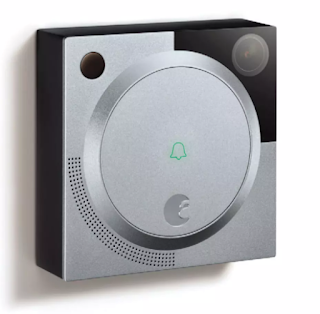A FRESH LOOK AT KEY SMART HOME SOLUTIONS
AT ONE POINT, the idea of a smart home mainly revolved around the smart thermostat and the novel idea that you could control the temperature of your home from your smartphone. But now, smart home technology covers the entire household, inside and out, to the point where you can add some form of connectivity to almost every thing. There are whole home security systems, doorbells, lights, sprinkler systems, and many others in between. Here are a few examples of where the smart home technology market is today as well as some specific products to consider in the future.
Doorbells:
Before the smart home revolution, doorbells were essentially noisemakers that couldn't do much more than alert you when someone stepped up to your front door and prese the button. Today, smart and connected doorbells include not only the traditional button to let visitors make their presence known, but also a camera so you can see the person, a microphone so you can hear them, and speakers so they can hear you. However, as with so many of these smart home devices, smart doorbells can come in handy even when you're not at home. Many of them come with apps that enable you to review video footage, check notifications, and get a general idea of what's going on in and around your home when you're away.
Yard
What traditional systems can't do, however, is let you know that a sprinkler head isn't working properly. In addition to alerting you to problems with your watering system, smart sprinkler systems enable you to set an automatic schedule, adjust the schedule from anywhere, and generally maintain your lawn more accurately. You can use these systems' internet connectivity to grab the latest weather forecast and use it on the spot to make decisions about when to water and when to hold off. this will decrease your effort and make your lawn hydrated automatically and help the environment and your wallet.
Energy Management:
Smart home thermostats let you set temperature based on when people are home and when they're away. In the summer, when outside temperatures are higher, you might, for example, want to set your thermostat at 68 degrees when you're home and 78 degrees when you're away. Instead of manually setting it, you can program a smart thermostat to automatically rise to 78 degrees by 8:00 a.m. when you're off to work, and then start lowering to 68 degrees so it's cool by the time you get home at the end of the day. Smart energy management can be easily control from mobile anywhere.
Lighting
Virtual Assistants
The smart home is all about individual, traditionally disconnected devices and systems coming together via wireless connectivity to make it easier for homeowners to manage them. Nothing embodies that spirit more than virtual assistants, which not only interact with the user but also connect with all of these separate smart home devices. For example, you can talk to a virtual assistant and ask it to read you the latest news, play music, or give you the weather forecast, but you can also use voice commands to have a virtual assistant turn on a light in a room or even turn on your sprinklers. Many of these devices also have machine learning built-in, so they'll learn about your preferences over time, make suggestions, and introduce even more automation into your home.
Electrical Control
Smart home technology isn't solely focused on security and protection, although those are major segments of the market. One of the more interesting applications of smart home connectivity is using wireless devices to manage electricity and automatically turn devices on or off depending on the user settings. Here's how these systems work: You plug the device into a power outlet and then plug something into it, whether it's a light, a fan, or something else. You can then determine whether you want that device to turn on at a certain time and on a certain schedule or if you want to use an additional motion sensor to turn a light on when someone walks in the door, for example.
Smart Locks:
Through the smart lock you can automatically open or close door or window from your mobile phone by sitting anywhere. You can also see the guest or person standing outside with the help of camera fitted in the lock and listen him with the help of microphone. smart lock is also available in traditional design with smart features
Security
It used to be that you had to sign up for a monthly service and have someone come out and install a home security system if you wanted an extra layer of protection for your house and belongings. But now, as more devices are contain their own security solutions, such as cameras and alarms, but also monitor them from anywhere. Today's smart home enabled security systems give users the option to monitor security camera footage live from their phones, make sure the system itself is turned on an operating properly, and even get real-time notifications when someone enters the house, whether they are supposed to be there or not. G









